Abstract
A sample of 182 respondents to a mail survey in two Pennsylvania counties, one rural, one urban, provided information on the sources of their health information. Research questions addressed were from what sources did they obtain their health information, what differences were there in patterns of response between middle-aged and older residents, and how much did various subgroups use health information. Respondents indicated they received most of their health information from printed materials, television, and informal network members, in that order, with little difference between rural and urban respondents. Radio and organizations, such as unions, were less frequently used as health information sources. The amount of information received from printed materials decreased slightly with age for women, but decreased sharply for men. The amount of information received from TV decreased with age, especially for urban residents. The youngest and oldest groups reported receiving the most health information from printed materials. TV was the most common source of health information for middle-aged adults. The findings indicate that persons disseminating health information should target their efforts through printed materials, TV, and informal networks. The most frequently mentioned sources of health information were TV specials, news stories, magazines, news articles, publications, medical books, and physicians. Radio and organizations, used by large segments of the population, are relatively untapped in terms of their potential, and not fully used when available. The urban elderly appear to receive little health information from any source.
Full text
PDF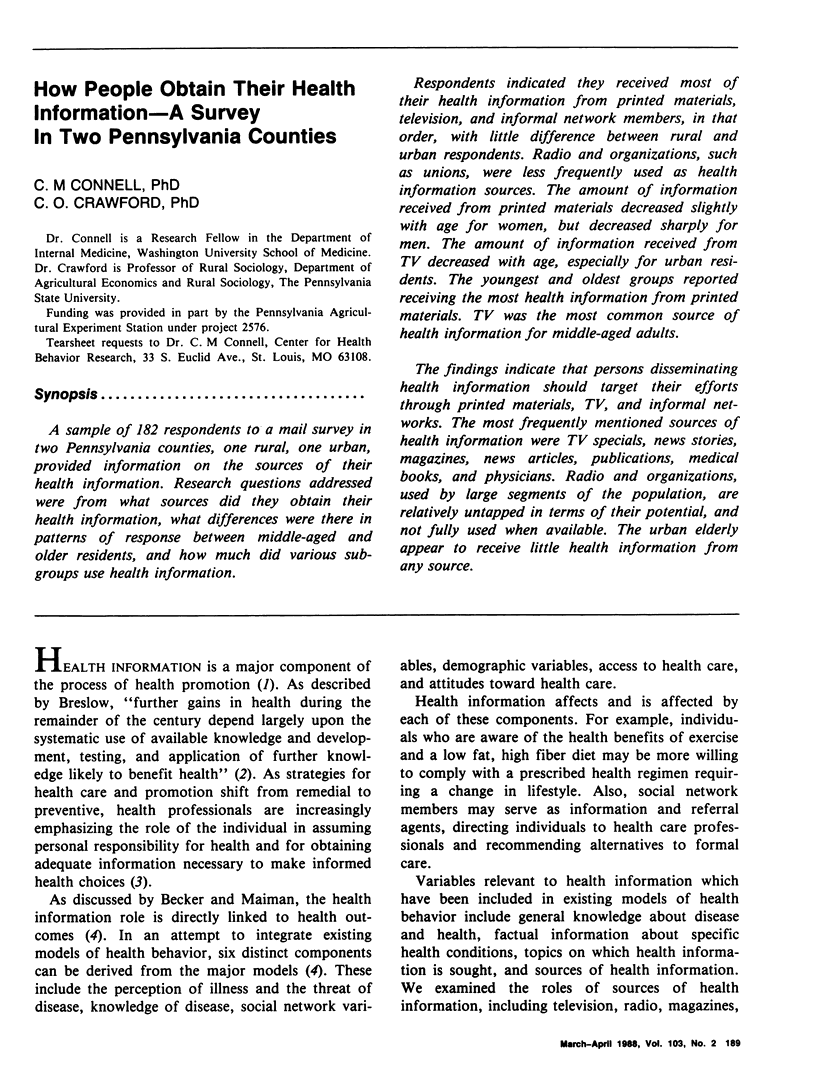
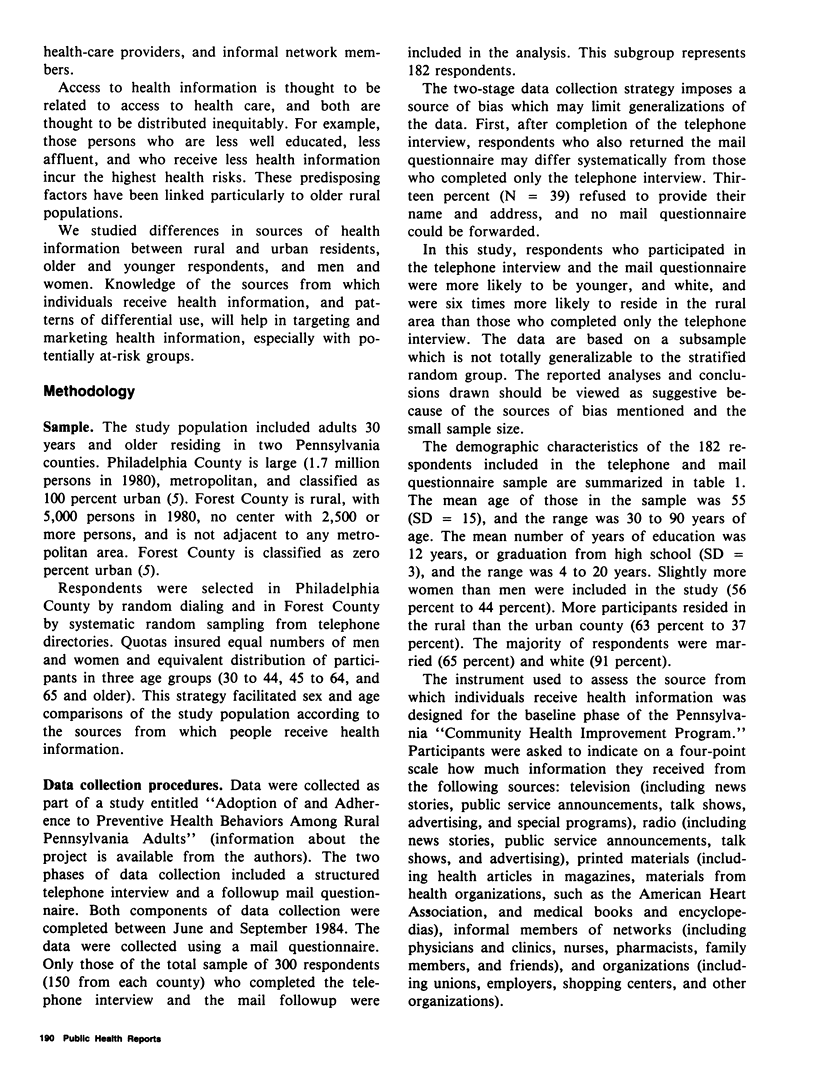
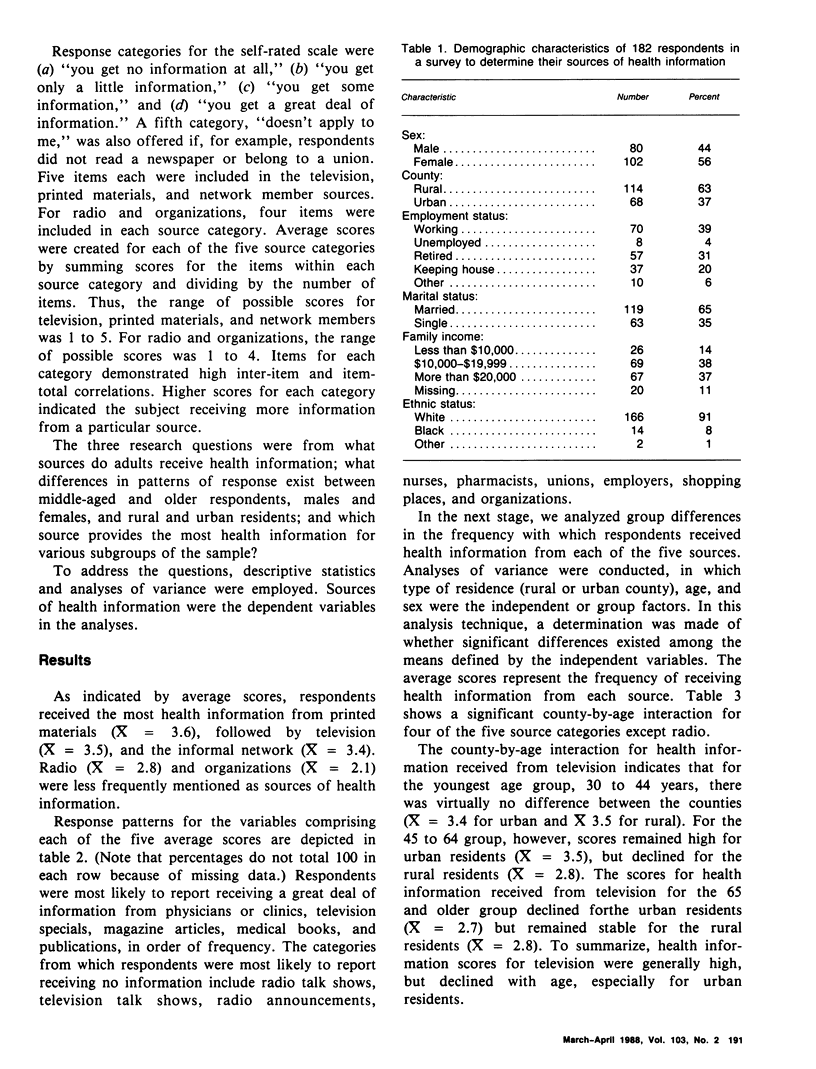
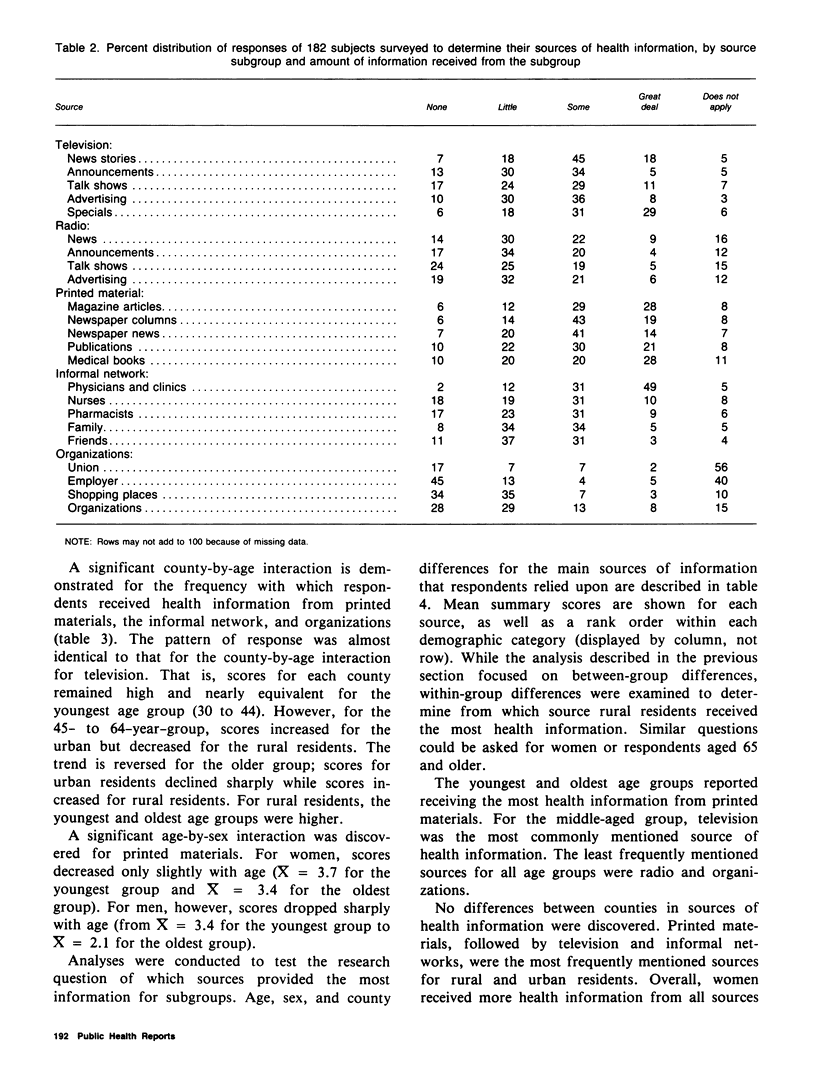
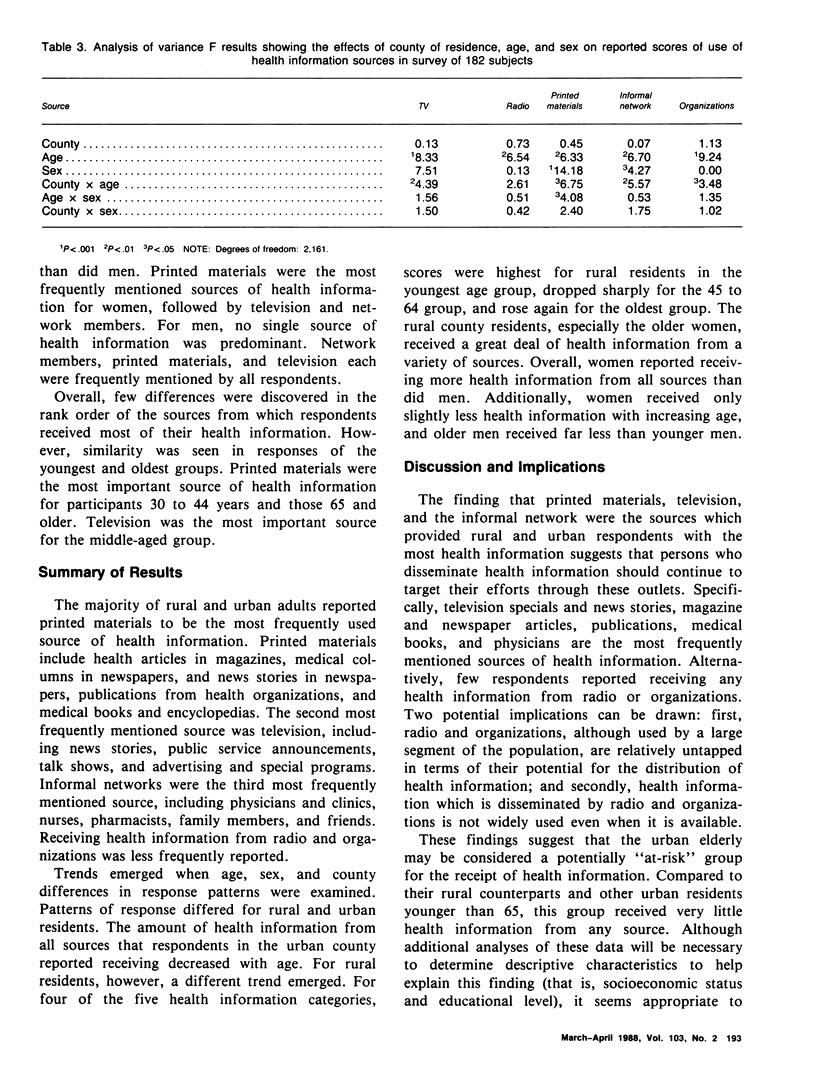
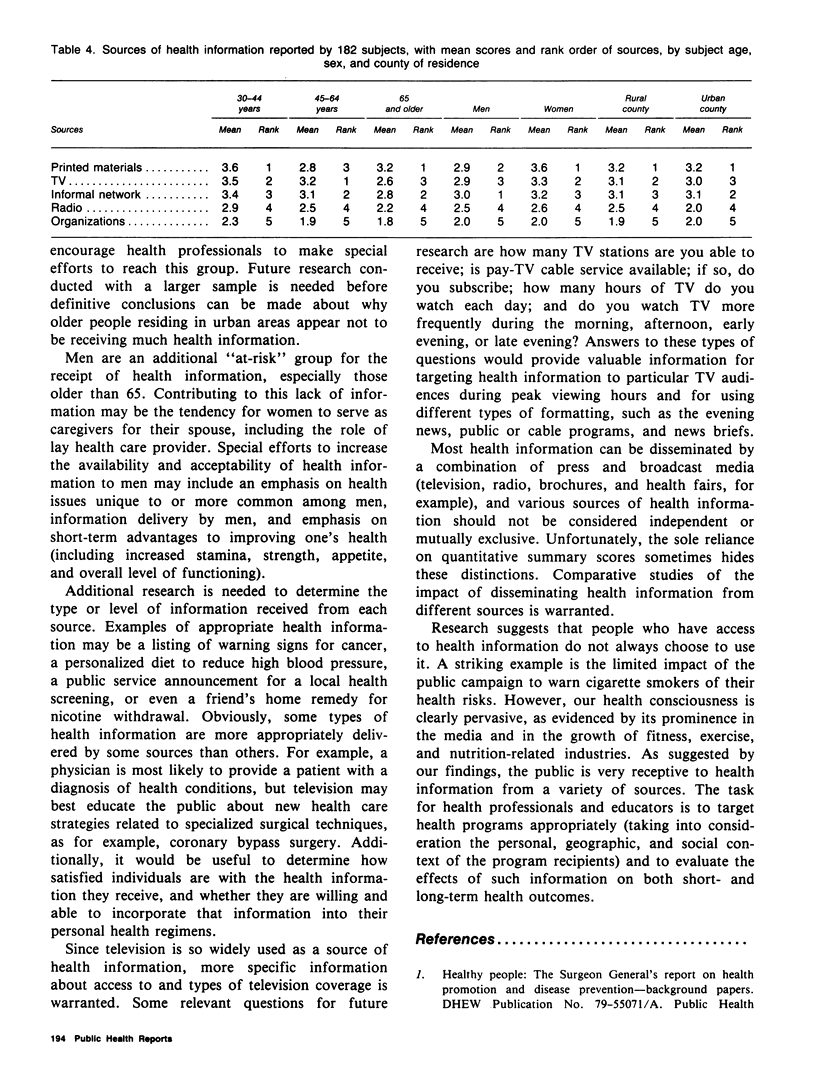

Selected References
These references are in PubMed. This may not be the complete list of references from this article.
- Fries J. F. Aging, natural death, and the compression of morbidity. N Engl J Med. 1980 Jul 17;303(3):130–135. doi: 10.1056/NEJM198007173030304. [DOI] [PubMed] [Google Scholar]


